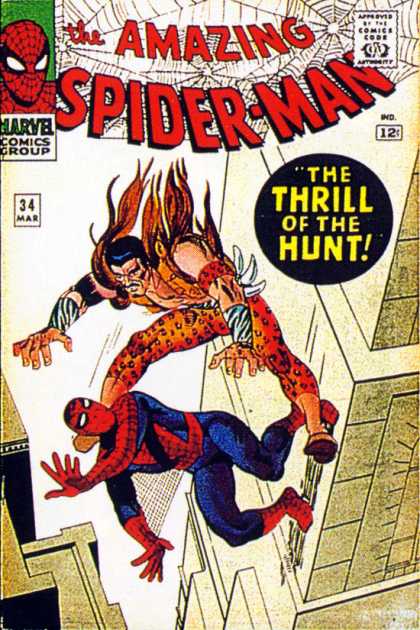



The remnants of my original 600+ comix collection of Silver-Age Marvels exist safely under glass, framed on the wall of the home office. I picked these to hang on to as representative of the joy of the early 1960s Marvels, when Stan Lee, Jack Kirby, Steve Ditko, Don Heck, and Dick Ayers were revolutionizing the comix industry.
Lee and Kirby, obviously, are legitimate icons of the whole business. Ditko was something of a cult figure, an acquired taste, and a master of almost baroque mood (I tend to think about him, somehow, in the same category with Gil Kane, except that Kane never quite had Ditko's class). Heck and Ayers were second-stringers--journeymen artists who did most of the heavy lifting on the back-up heroes like Giant Man and Iron Man. (Ayers' true love and place to shine was obviously NIck Fury and the Howlin' Commandoes; Heck did a number of early Avengers--after Kirby left and prior to issue 40--that deserve more attention than they usually get.) Ayers and Heck more or less disappeared into the mists after the arrival of the next wave of artists like Gene Colan (aka Adam Austin), John Buscema, Johnny Romita, and (even) Werner Roth.
The four issues under glass are Avengers #4, Tales of Suspense #59, Tales to Astonish #60, and Spiderman #34.
A little about each:
Avengers #4 is justly famous for bringing back Captain America from that block of ice. The Avengers were something of a Justice League rip-off (with most of the assembled heroes having their own strips), with Stan Lee's typical treatment that, in the early days, the group didn't really get along. But what did you expect with the Incredible Hulk as a charter member? The Hulk didn't last long, and with the arrival of Captain America the focus changed and the internal bickering pretty much disappeared. There were some really good issues (I loved Kang the Conqueror in issue #6), but I don't think the Avengers actually came into their own until Thor, Giant Man (and the Wasp), and Iron Man disappeared for awhile. Then Cap got Quicksilver (a poor man's mutant Flash), the Scarlet Witch (his sister), and Hawkeye (villain turned anti-hero from the Iron Man series); they had a particularly good two-parter against the Swordsman in about issues 20-21--a strong story with workmanlike art by Don Heck,
Tales of Suspense #59 and Tales to Astonish #60 attempted to put four second-stringers into their own books. Iron Man and Captain America split Suspense, while Giant Man and the Hulk divided up Astonish (later, the Sub-Mariner would push out Giant Man for the second slot). (The Hulk had lost his own, stand-alone book after six groundbreaking but poor selling issues.) I never really felt like either Captain America or Giant Man found themselves in this format. Iron Man, once Gene Colan took over the pencils, became an excellent, consistent feature, although the continued stories got stretched unmercifully (especially the final confrontation with Whiplash in the last few issues of the magazine).
The Hulk was something else. Steve Ditko continued with the pencils he had taken over from Jack Kirby, and did his best work on a series of stories that found Bruce Banner and his alter ego trapped in Communist China. Later Marie Severin took over the artwork and moved the Hulk back into the big time (with some help from the latter rugged pencils of Herb Trimpe).
But I always felt that one of the best renditions of the Hulk was provided in the two or three stories done by Micky Dimeo (somewhere around issues #85-88), a long-time Marvel inker who did very little artwork on his own. Dimeo's Hulk owed something to Bill Everett, but had a harsh, slab-like appearance that I always felt captured the beast better than anybody else did until Trimpe (or perhaps the Jim Steranko cover from Hulk Annual #1).
I'd love to find a image of the Dimeo Hulk on the web, but haven't been able to do so yet. If anybody can provide one, I'd be greatful.
Spiderman #34 is late Ditko (his last issue would be #39), and there is nothing particularly stellar about the story. In fact, after the issues in the mid-20s, the story-telling went downhill until Romita came along with #40. But what a killer cover!
I learned to read, and even arguably learned to write reading these comix. Fortunately, I had parents who believed that it didn't matter what a kid was reading just as long as he was reading.

Comments
Hold onto that Avengers #4, man. That's priceless.